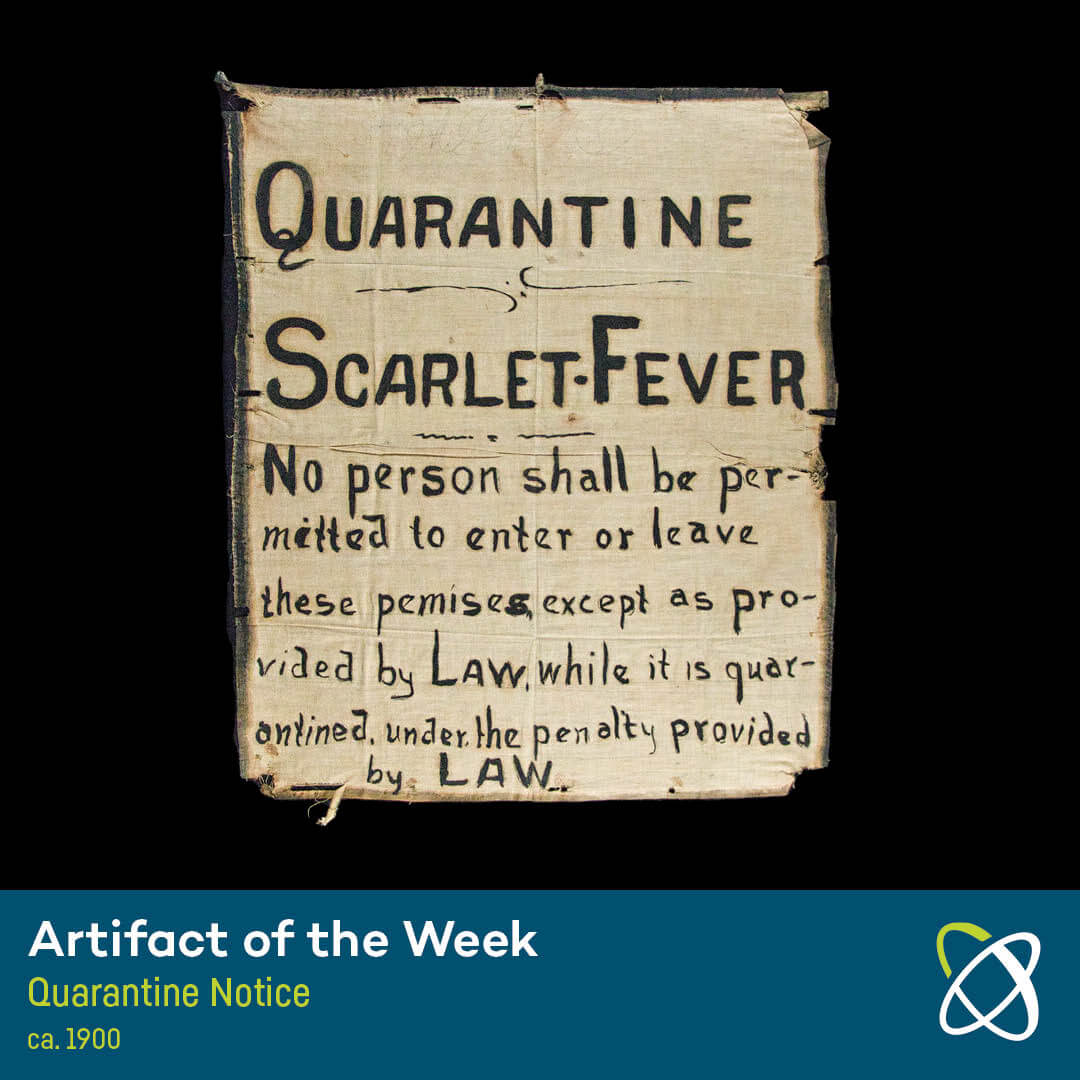Quarantine Notice – ca. 1900
This cloth quarantine notice says it all. Wherever it hung, this notice was a clear warning to avoid this place. In the 19th century, scarlet fever epidemics happened frequently, striking terror in the hearts of parents everywhere. Children were particularly susceptible, and it is estimated that the mortality rate from scarlet fever reached 30% in the US between 1840 and 1883.

What is scarlet fever? And does it still exist?
Scarlet fever is an infection caused by the same bacteria that causes strep throat. The infected person experiences a high fever and sore throat just like with strep throat, but those with scarlet fever also experience a red rash and flushed face. The name scarlet fever comes from these symptoms. The fever is spread when someone comes in contact with droplets expelled by an infected person’s cough or sneeze.
We know that scarlet fever has been around since at least the 5th century BC, but in the 19th century AD scarlet fever epidemics began to happen more often in cities with devastating results. The mortality rate from scarlet fever reached 30% in the US and Europe between 1840 and 1883. This is due to the lack of treatment options for the infection. What few treatments were available were primitive and ineffective, ranging from greasing a patient with bacon fat to bleeding and purging. Without adequate treatment, scarlet fever raged essentially unchecked, and many of those infected developed dangerous and fatal complications.
Scarlet fever does still exist, but luckily those few incidences of it are easily treated with antibiotics.
See more Artifacts of the Week
Artifact of the Month Video Series
Connect with curiosity!








